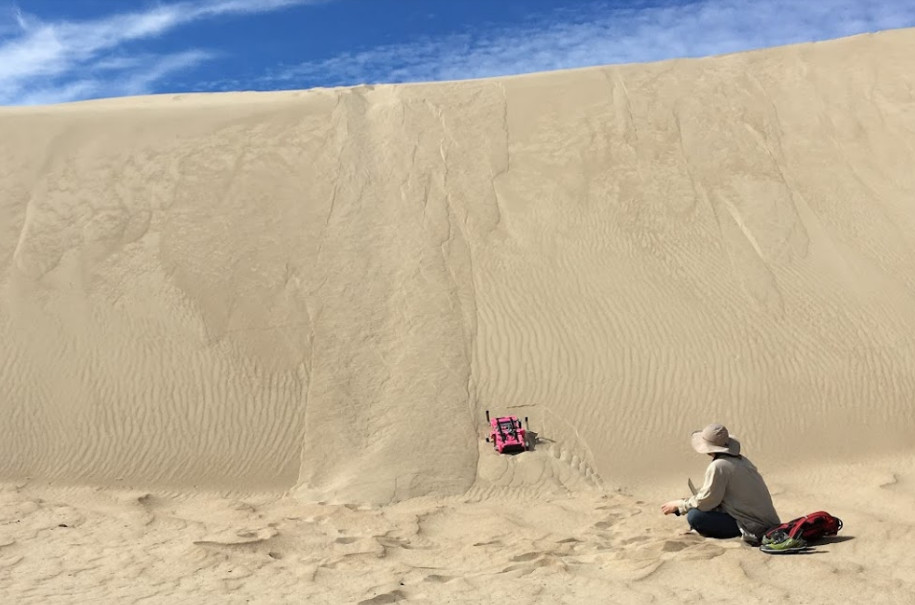
Robohub.org
Careers in robotics: What is a robotics PhD?
This relatively general post focuses on robotics-related PhD programs in the American educational system. Much of this will not apply to universities in other countries, or to other departments in American universities. This post will take you through the overall life cycle of a PhD and is intended as a basic overview for anyone unfamiliar with the process, whether they are considering a PhD or have a loved one who is currently in a PhD program and just want to learn more about what they are doing.
The basics
A PhD (doctoral degree) in engineering or a DEng (Doctorate of Engineering) is the highest degree that you can earn in engineering. This is generally a degree that people only earn one of, if they earn one at all. Unlike a bachelor’s degree or a master’s degree, a PhD studying a topic relevant to robotics should be free and students should receive a modest stipend for their living expenses. There are very few stand-alone robotics PhDs programs, so people generally join robotics labs through PhD programs in electrical engineering, computer science, or mechanical engineering.
Joining a lab
In some programs, students are matched with a lab when they are accepted to the university. This matching is not random: If a university works this way, a professor has to have a space in their lab, see the application, and decide that the student would be a good fit for their lab. Essentially, the professor “hires” the student to join their lab.
Other programs accept cohorts of students who take courses in the first few years and pick professors to work with by some deadline in the program. The mechanism through which students and professors pair up is usually rotations: Students perform a small research project in each of several labs and then join one of the labs they rotated in.
The advisor
Regardless of how a student gets matched up with their advisor, the advisor has a lot of power to make their graduate school experience a positive one or a negative one. Someone who is a great advisor for one student may not be a great advisor for another. If you are choosing an advisor, it pays to pay attention to the culture in a lab, and whether you personally feel supported by that environment and the type of mentorship that your advisor offers. In almost every case, this is more important for your success in the PhD program than the specifics of the project you will work on or the prestige of the project, collaborators, or lab.
Qualifiers
PhD programs typically have qualifiers at some point in the first three years. Some programs use a test-based qualifier system, either creating a specific qualifier test or using tests from final exams of required courses. In some programs, you are tested by a panel of faculty who ask the student questions about course material that they are expected to have learned by this point. In other programs, the student performs a research project and then presents it to a panel of faculty.
Some universities view the qualifiers as a hurdle that almost all of the admitted PhD students should be able to pass, and some universities view them as a method to weed out students from the PhD program. If you are considering applying to PhD programs, it is worth paying attention to this cultural difference between programs, and not taking it too personally if you do not pass the qualifiers at a school that weeds out half of their students. After all, you were qualified enough to be accepted. It is also important to remember, if you join either kind of program, that if you do not pass your qualifiers, usually what happens is that you leave the program with a free master’s degree. Your time in the program will not be wasted!

The author testing a robot on a steep dune face on a research field trip at Oceano Dunes.
Research
Some advisors will start students on a research project as soon as they join the lab, typically by attaching them to an existing project so that they can get a little mentorship before starting their own project. Some advisors will wait until the student is finished with qualifiers. Either way, it is worth knowing that a PhD student’s relationship to their PhD project is likely different from any project they have ever been involved with before.
For any other research project, there is another person – the advisor, an older graduate student, a post doc – who has designed the project or at least worked with the student to come up with parameters for success. The scope of previous research projects would typically be one semester or one summer, resulting in one or two papers at most. In contrast, a PhD student’s research project is expected to span multiple years (at least three), should result in multiple publications, and is designed primarily by the student. It is not just that the student has ownership over their project, but that they are responsible for it in a way that they have never been responsible for such a large open-ended project before. It is also their primary responsibility – not one project alongside many others. This can be overwhelming for a lot of students, which is why it is impolite to ask a PhD student how much longer they expect their PhD to take.
The committee
The “committee” is a group of professors that work in a related area to the student’s. Their advisor is on the committee, but it must include other professors as well. Typically, students need to have a mix of professors from their school and at least one other institution. These professors provide ongoing mentorship on the thesis project. They are the primary audience for the thesis proposal and defense, and will ultimately decide what is sufficient for the student to do in order to graduate. If you are a student choosing your committee, keep in mind that you will benefit greatly from having supportive professors on your committee, just like you will benefit from having a supportive advisor.
Proposing and defending the thesis
When students are expected to propose a thesis project varies widely by program. In some programs, students propose a topic as part of their qualifier process. In others, students have years after finishing their qualifiers to propose a topic – and can propose as little as a semester before they defend!
The proposal and defense both typically take the form of a presentation followed by questions from the committee and the audience. In the proposal, the student outlines the project they plan to do, and presents criteria that they and their committee should agree on as the required minimum for them to do in order to graduate. The defense makes the case that the student has hit those requirements.
After the student presents, the committee will ask them some questions, will confer, and then will either tell the student that they passed or failed. It is very uncommon for a PhD student to fail their defense, and it is generally considered a failure on the part of the advisor rather than the student if this happens, because the advisor shouldn’t have let the student present an unfinished thesis. After the defense, there may be some corrections to the written thesis document or even a few extra experiments, but typically the student does not need to present their thesis again in order to graduate.
The bottom line
A PhD is a long training process to teach students how to become independent researchers. Students will take classes and perform research, and will also likely teach or develop coursework. If this is something you’re thinking about, it’s important to learn about what you might be getting yourself into – and if it’s a journey one of your loved ones is starting on, you should know that it’s not just more school!
tags: c-Research-Innovation






